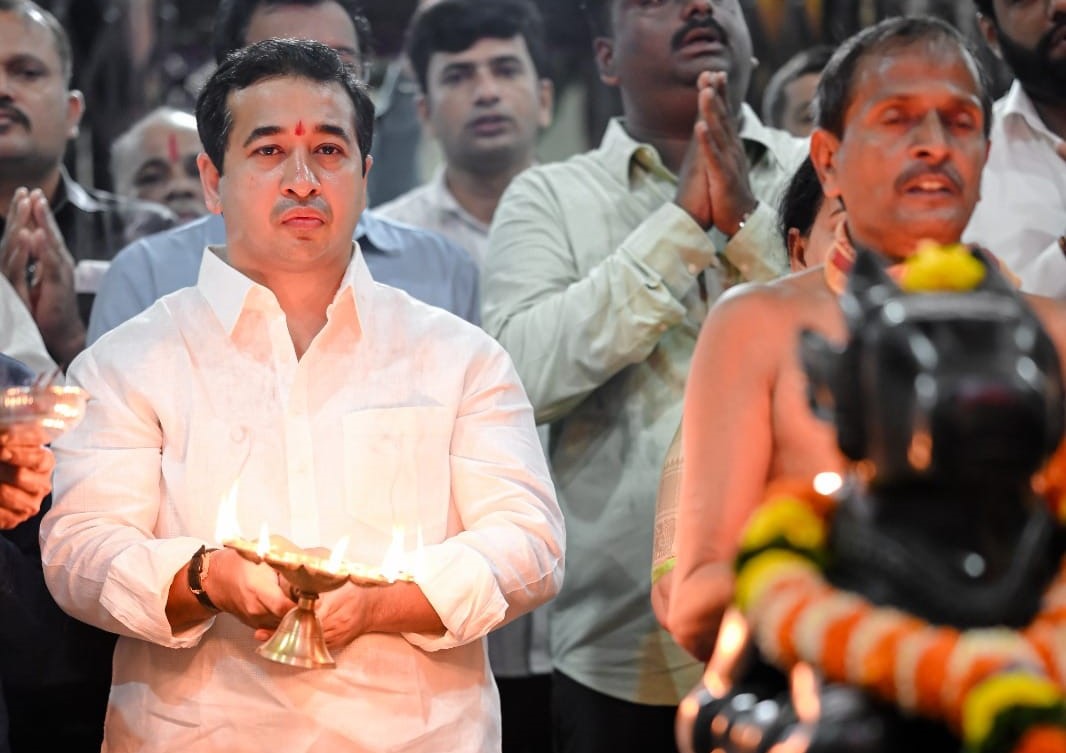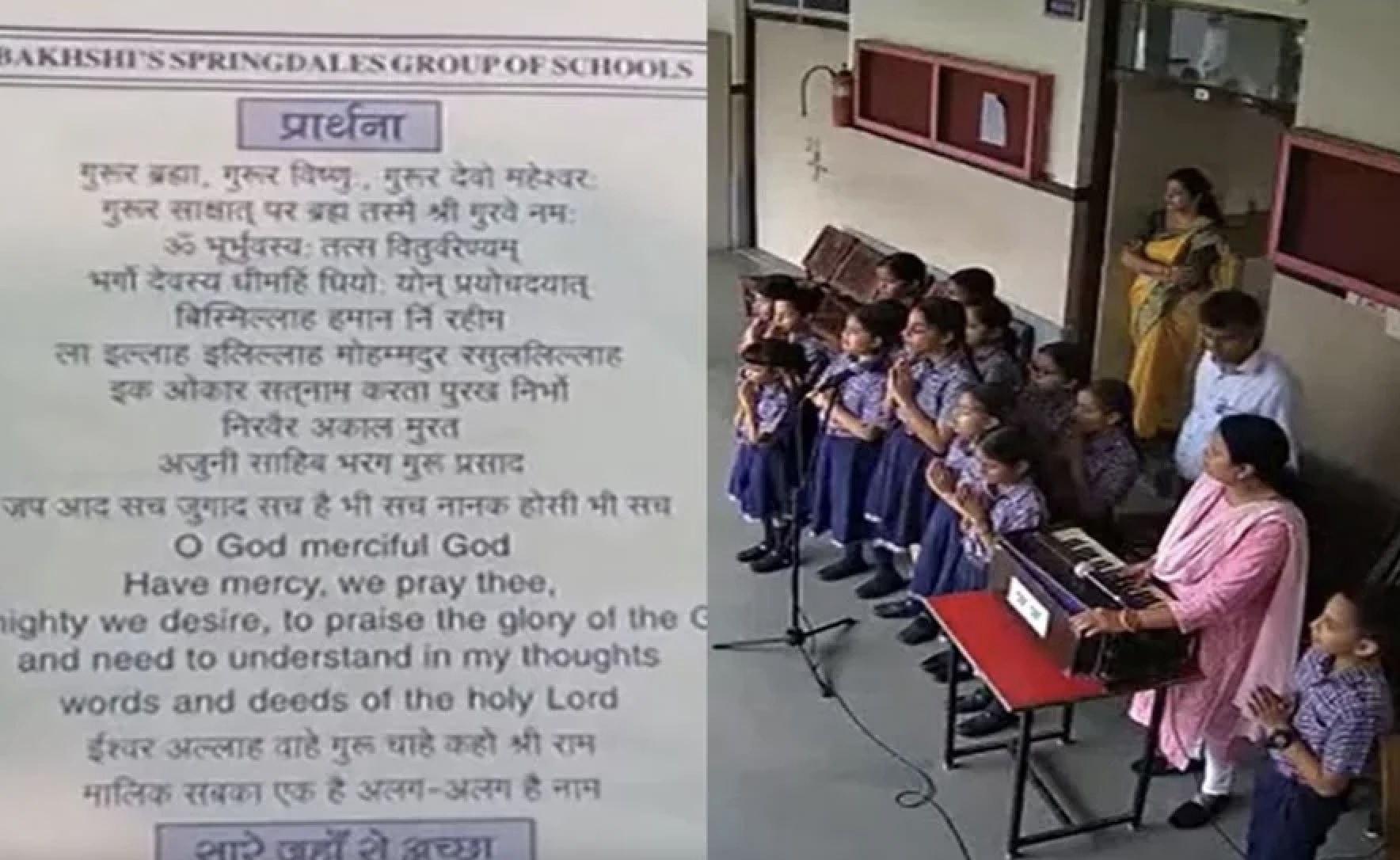
By Praneet Pathak / The Wire
With its victory in Punjab, Aam Aadmi Party (AAP) now runs governments in two states. This has given rise to the perception that AAP is well-positioned to occupy the national opposition space, which the Congress party has vacated in the past few years given its inability to effectively hold the BJP to account.
In its bid to expand, AAP has aggressively positioned itself as a ‘nationalist’ party, flashing its Hindu credentials. This has birthed a raging debate about whether AAP can really be a true alternative to the BJP, or will it prove to be a ‘BJP Lite’, just by being more polished than BJP in being communal?
For its part, AAP, in its defence, argues that its religious outreach to Hindus is fundamentally different – from the BJP – as it is not premised on hatred against minorities.
On the other hand, the narrative dominance of the BJP ensures that deference to majority religiosity in public life has become a political norm – a compulsion that most ‘secular parties’ have succumbed to. Against this backdrop, AAP seems to be believing that indulging in majority religiosity and pandering to Hindutvawadis will help the party attract Hindu fundamentalist voters, who have thus far only been with the BJP.
However, AAP’s positioning over the last week, in its attempt to corner the BJP, reveals that the party may have turned a corner in its tryst with bigotry.
Much past inane religiosity
At first, AAP’s outreach to the majority community came via government funding of pujas, Teerth Yatras at taxpayers’ expense, among others. This was in no way harmless. It involved the promotion of religion through state resources while discriminating against the community of atheists and agnostics, as their taxes were used for promoting religion against their sentiments.
Besides, the desirability of deploying scarce taxpayers’ resources for religious activities when the state was not performing many more significant and urgent roles mandated of it was suspect too. Even still, it didn’t actively harm any community and was thereby excused as inane religiosity.
Taking it to another level, AAP refused to stand up for citizens when they were targeted by the majoritarian forces, in the Delhi riots and elsewhere. The problem with AAP stances is multifold.
It has left Muslims in Delhi feeling hopelessly alienated, as they have no political voice given that AAP chose politically expedient silence even when lives could have been saved had the party actively deployed its organisation and leadership. Its presence on the ground against communal forces and targeting of Muslim households and businesses could have delivered justice for hapless citizens.
That AAP harps on the fact that law-and-order in Delhi doesn’t come under its purview in no way can justify the abdication of its responsibility to represent people as a political entity. Representing those targeted by communal forces does not require power, all it requires is the intention to stand up against the wind. Thus, AAP’s silence in the face of BJP rabble-rousing raises a moral question. Therefore, AAP has tactfully, for its political gains, through its studied silence, prevented the BJP from its attempts to polarise the electorate on religious lines.
But, over the past week, AAP has taken another leap in its embrace of communal politics. Now, its top leaders are seen actively cultivating and encashing on the hatred and prejudice against Muslims while using it for political mobilisation.

Illegal structures during a joint anti-encroachment drive by NDMC, PWD, local bodies and the police, in the violence-hit Jahangirpuri area, in New Delhi, Wednesday, April 20, 2022. Photo: PTI/Shahbaz Khan.
When AAP leaders Manish Sisodia and Atishi Marlena attacked BJP for “illegally settling” Rohingyas and Bangladeshi Muslims, whom AAP blamed for the clashes and sought action against them, they stepped into the murky world of hate-filled communal mobilisation.
The attack has sought to exploit the hatred, fear and prejudice against Rohingyas and Bangladeshi Muslims, as AAP too conveniently scapegoated them as a community, without any nuance of distinguishing between opposing mischief-makers and opposing the whole community.
This hate and prejudice are driven by Islamophobia, as Indians otherwise have never been hostile to other immigrants. The targeting of these communities help serve the communal narrative of Muslims being “trouble makers”, who are seen as “others”, unworthy of any compassion. It is this narrative that AAP has strengthened. Also, AAP, for its political gain, has targeted a marginalised community already vulnerable to prejudice.
Similarly, the causal tarnishing of journalist Rifat Jawaid as “Talibani” and “Jihadi” reveals dangerous bigotry in multiple senses. It shows how AAP leaders instinctively hold all Muslims suspect, as any Muslim whose remarks are unfathomable, even renowned ones, can be publicly denigrated and labelled on grounds of their religion. It has a chilling effect on Muslims as any dissenting opinion leads to questions of loyalty.
The aggressive attack of Naresh Balyan on Rifat Jawaid also reflects that there is little scope for nuance in AAP’s politics. It also reflects the lack of democratic sensibility that respects differences. It reveals the inability to agree to disagree without being uncivil or casting doubts on dissenters’ intentions.
AAP’s worldview
Through these instances, AAP has revealed that perhaps the communal worldview – of Muslims being the perpetual others, being the constant trouble makers, with incessantly suspect loyalties and an inability to mould into society – is its worldview, which it could actively spread and perpetuate for political mobilisation.
If it didn’t stand up against such bigotry in the past, it was not because it was politically expedient, but because, perhaps, it never had a problem with such a worldview. Perhaps that is why AAP’s parent organisation India Against Corruption (IAC), out of which it birthed, enjoyed such close collaboration with the RSS. Perhaps that is why the likes of Kapil Mishra and Kumar Vishwas, Hindutva icons in their own right, had no ideological issues with AAP (they left only when their egos and ambitions couldn’t be accommodated within AAP) and were at the very core of the party without feeling any dissonance between their own worldview and that of AAP.
Alternatively, AAP may still rise up to its creed of “Insaniyat” by drawing the red line in either of these cases. It should carefully reflect does it really need to out-manoeuvre the BJP on bigotry? Does a political party need to win all voters, including the fringe? At what cost? Can it really outflank BJP in such hate-filled mobilisation and for how long?
AAP should think hard on these issues, because the answers will not just inform whether the party wins or loses a state or two but whether the idea of an inclusive India, respectful of its diversity, wins or loses.
This article first appeared on thewire.in






